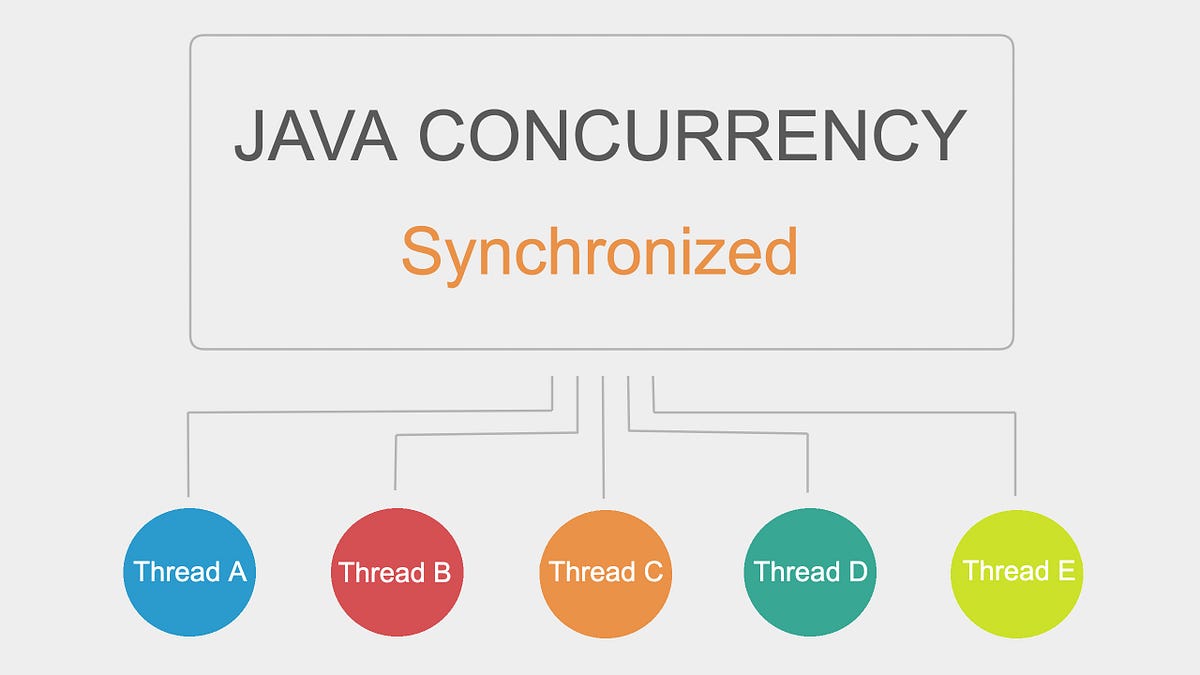Introduction
In the world of programming, speed and efficiency are often the keys to success. In the world of Java, understanding concurrency and synchronization is essential for achieving these goals.
This comprehensive guide delves deep into the concepts of concurrency and synchronization, exploring why they matter and how mastering them can elevate your Java programming skills to new heights. We will also highlight the crucial role of Java training course in helping you unlock the full potential of these concepts.
The Significance of Concurrency
Before we embark on our journey into the intricacies of concurrency and synchronization, let us grasp why these concepts are of paramount importance in the realm of Java programming.
- Improved Performance: In today's fast-paced world, users expect software to be responsive. Concurrency allows Java applications to execute multiple tasks simultaneously, resulting in improved performance and responsiveness.
- Resource Utilization: Efficient use of system resources is crucial. Concurrency enables better utilization of CPU cores and memory, making applications more resource-efficient.
- Scalability: Concurrency is the foundation of scalable applications. It enables Java programs to handle an increasing number of users or data without sacrificing performance.
- Responsiveness: Concurrency ensures that an application remains responsive, even when some parts of it are performing time-consuming operations, such as reading from a database or performing complex calculations.
Understanding Concurrency
Concurrency in Java refers to the ability of a program to manage multiple tasks simultaneously. It involves the use of threads, which are lightweight sub-processes within a Java application. Here are key concepts related to concurrency:
- Threads: Threads are the fundamental units of concurrency in Java. They allow a program to execute multiple tasks independently.
- Multithreading: Multithreading is the practice of using multiple threads to perform tasks concurrently. It's a core concept in Java and enables parallel execution.
- Thread Safety: In a multithreaded environment, thread safety is crucial. It ensures that data shared among threads is accessed and modified in a way that prevents conflicts and maintains the integrity of the data.
The Role of Synchronization
While concurrency provides the foundation, synchronization is the tool that ensures threads work together harmoniously. Synchronization in Java involves controlling access to shared resources or sections of code to prevent conflicts and data corruption. Key synchronization mechanisms include:
- Synchronized Methods: Java allows you to mark methods as synchronized, ensuring that only one thread can execute a synchronized method on an object at a time.
- Synchronized Blocks: Synchronization can also be applied to specific code blocks, giving more fine-grained control over thread access to shared resources.
- Locks and Semaphores: Java provides advanced synchronization mechanisms like locks and semaphores, which offer greater flexibility and control over thread interactions.
Why Pursue a Java Training Course?
Mastering concurrency and synchronization in Java requires a deep understanding of these complex concepts. Enrolling in a Best Java Training in Kolkata, Pune, Noida, Agra, Lucknow, Patna, and various other Indian cities can offer several compelling benefits:
- Structured Learning: Java courses provide a well-structured curriculum that covers not only the fundamentals but also advanced topics like concurrency. You'll receive a comprehensive education on Java's concurrency model.
- Expert Guidance: Experienced instructors can guide you in understanding the intricacies of concurrency and synchronization. They provide insights, best practices, and real-world examples to solidify your knowledge.
- Hands-On Experience: Courses often include hands-on projects that allow you to apply concurrency concepts to real-world Java applications. This practical experience is invaluable.
- Networking: Joining a Java training course connects you with fellow learners and experienced professionals in the field. Networking can lead to collaborations, mentorships, and career opportunities.
- Certification: Completing a Java course often results in certification, which can boost your credibility and employability in the competitive job market.
- Access to Resources: Courses typically provide access to resources like Java development environments, libraries, and practice exercises, ensuring you have everything you need to succeed.
Conclusion
In a world where performance, responsiveness, and scalability are paramount, mastering concurrency and synchronization in Java is not just an option but it is a necessity. These concepts empower Java developers to create efficient, responsive, and high-performance applications.
If you are considering a career as a Java developer or are already on the Java development path, don't underestimate the importance of concurrency and synchronization. They are the building blocks of modern Java applications. And remember, enrolling in a Java training course in India can provide you with the knowledge, skills, and practical experience needed to excel in this dynamic and ever-evolving field. So, why wait? Start your journey towards Java mastery today!




No comments yet